View current page
...more recent posts
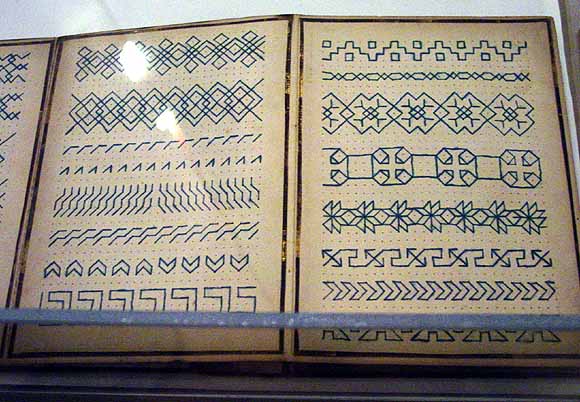
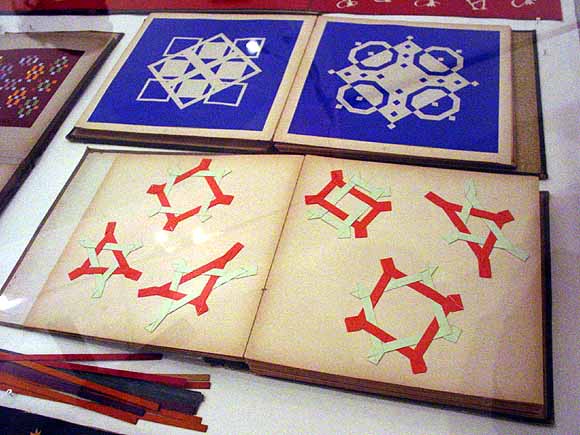
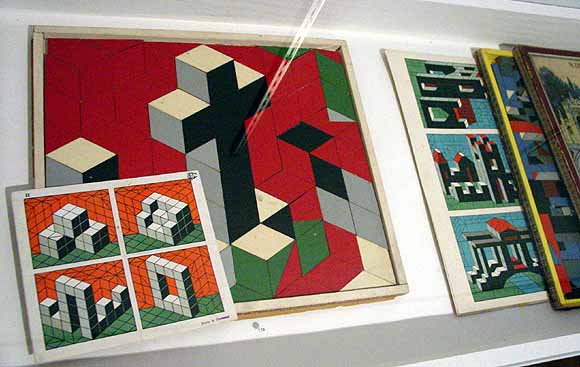
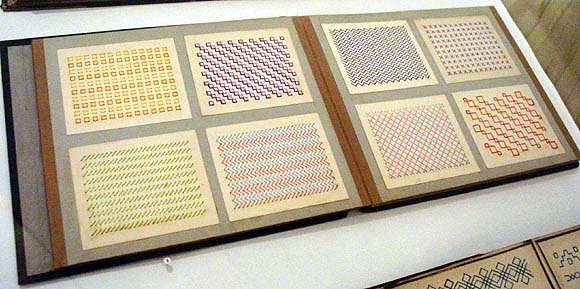
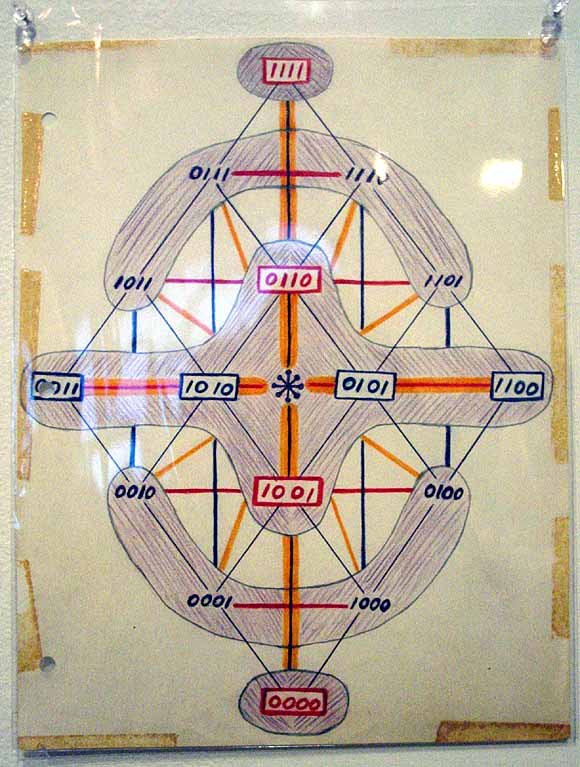
Photos from the exhibition "Philosophical Toys" at Apex Art, New York. From the web page:
The tactile, visual, and philosophical fuse in this exhibition, historically anchored in the "gifts" innovated in the 1830s by Friedrich Fröebel, the inventor of Kindergarten. The historical and contemporary works featured prove that if combined with visual and material pleasure, learning even the most abstract thought can be made into a wondrous experience—literally, child's play. Invited by apexart to invite two art dealers to select artists for the exhibition, Sina Najafi, Editor-in-Chief of Cabinet magazine, has invited the participation of private art dealers / writers Norman Brosterman (author, Inventing Kindergarten) and Christine & Margaret Wertheim (co-founders, The Institute For Figuring, Los Angeles). Mr. Brosterman has chosen works by Friedrich Fröebel, the crystallographer who invented Kindergarten, and a collection of unattributed 19th-century exercise books and parquetry puzzles. The Wertheims have selected works by Jeannine Mosely, an MIT-trained electrical engineer who is one of the world's most renowned paper folders, and Shea Zellweger, a self-taught logician who has devised a visual alphabet for revealing the geometry behind logic operations.All of the above images are the Fröebel, or Fröebel-related, material except the bottom one, which is one of Zellweger's drawings. The patterns in the first and fourth photos are made with thread pulled through holes in the paper. A flaw of the exhibition was too much ahistorical mixing of objects in the display cases. It's very poMo and all, but it would have been nice to know what you were looking at without having to puzzle it out, no pun intended. Brosterman's book on Fröebel got some attention a few years back for, among other things, overreaching in its thesis. The author proclaims Fröebel the true father of Modernism because so many early 20th Century artists and architects were exposed at young ages to the analytical and diagrammatic methods in his kindergarten curricula. No doubt the Kabbalists and makers of tantric symbols also got their interest in abstraction from attending his preschools. This exhibit should be of special interest to the Komputer Kraft Krowd (I include myself there) with its correlations to pixel art, weaving, needlepoint, mosaic tiles, obscure illuminati-like symbols, etc.
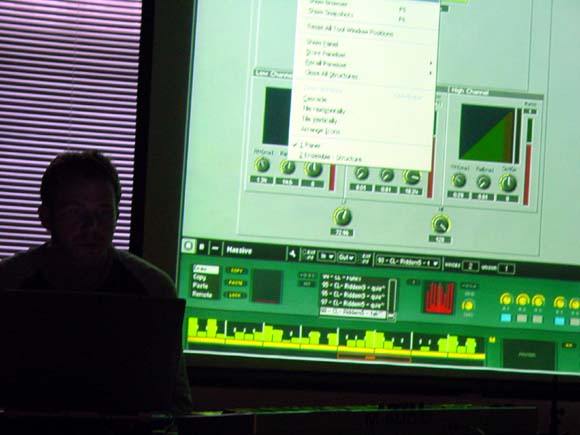
Chris List (aka CList) explains the GCD, or graphical compression/distortion unit he is working on for Reaktor 5, Native Instruments' user-designable software synth. Chris was a somewhat impromptu featured guest speaker at the Reaktor clinic at Sam Ash music in midtown, earlier today. He is one of the most prolific and ingenious of NI's "citizen designers"--i.e., people who contribute instruments to the shared user library and participate in Native Instrument forums but don't work for the company. I found out about his talk on the forum. In the photo, he is explaining how Reaktor's new "core" technology is allowing him to design a less CPU-intensive interface involving, among other things, the use of Bézier curves to plot sounds on an x-y grid. The underlying math of the GCD, applied at the core level, is way beyond me but the effect grabs the ear, and List explains it so clearly it almost sounds easy to make.
Also, thanks to Chris and the NI representative for answering my simple question about how to get samples out of Reaktor into other programs. You can save the individual .aiff files from Sampler/Properties/Sample Map Editor (located a few levels down inside the individual instrument) to a folder on your hard drive, or save the entire map and open it in Kontakt 2, which converts Reaktor sample maps. Awesome! I just converted the Limelight samples and can play around with them now outside Reaktor.
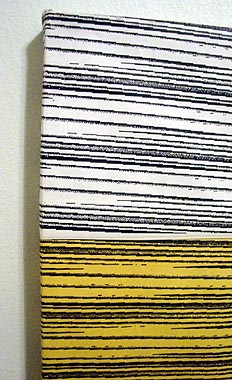
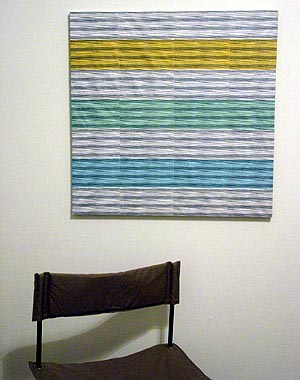
I originally posted this on February 16, 2004. It has been deleted and I am moving it here for...reasons bloggers will understand. The comments to the post have been moved to the comments to this post.
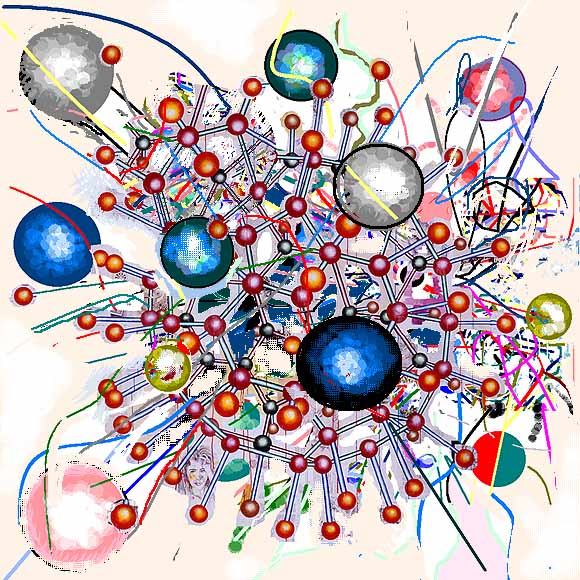
Oh--just noticed the art is for the people link, parked over on the left side of this page, has changed its content somewhat.
Shoutbacks--Thanks for the shouts this week from:
Tim at Travelers Diagram, whose lists of books spotted on New York subways I always enjoy, along with the other diverse and entertaining finds on his weblog, such as this story about war criminal Henry Kissinger reading about his own outrageously advanced pot belly in the New York Post. Congratulations on your wedding, Tim!
paul at dataisnature, who talked about my molecule-cum-product-box installations (been thinking about doing more of them). I look forward to perusing his archives and looking at more pieces like this one, speaking of fanciful molecular forms.
Rob Myers for his post on Swarm (but there's no scanning or retouching in that work--just printing and overprinting, and cutting with an X-acto). In this interview he talks about his admiration for the conceptualist outfit Art & Language and his fondness for remixing others' work. Yet the pieces in his San Jose series and the Smileys series are quite joyful and individualistic, not just an illustration of theory--or perhaps it would be more accurate to say they're their own semiotic theory in a tangible, pleasurable form. Examples from "San Jose" are below--he thinks it's his "weakest work" because it's not directly influenced by anyone else, but maybe he's just being modest or ironic. I would describe these as biomorphic tags done corporate logo style, and would like to see them in a show with Ryan McGinness and Anton Vidokle, who have also done hard-edged logo-like imagery. They're really nice:
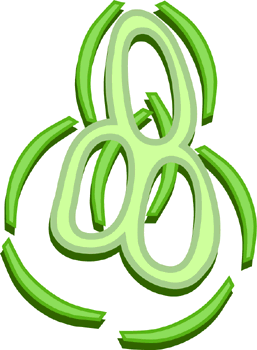
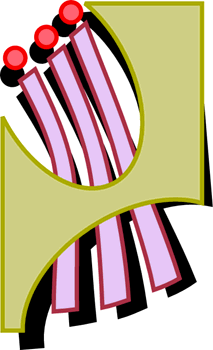
Posting (also email) has been crimped this weekend due to a surprise outage by Comcast Cable Co. They made a long-planned switch to a new, company-owned server and told everyone about it but their customers. 48 hours with no service and they can't send an email? I was so angry I decided to switch to another cable co-- oh, right, there is no other cable company. DSL is also not available on my block, due, I'm assuming, to the rotting phone lines Verizon has been planning to fix for about 10 years. A repairman told me a few months back that in last corporate reshuffle, a several-million-dollar figure allotted for infrastructure repairs, which the company elected to postpone, exactly equaled the executive bonuses that changed hands at the closing--and hey, I believe it!
I expect a big shitstorm of self-congratulatory hype from Comcast once they get their new internet pipes in place. The fact is their content is the worst, lowest common denominator cheese. Whenever I check my webmail, their front page always has the latest celebrity news, pictures of two-headed kittens, and verbatim press releases from the White House saying how well things are going in Iraq.
"Fly by the Pool" [mp3 removed]
